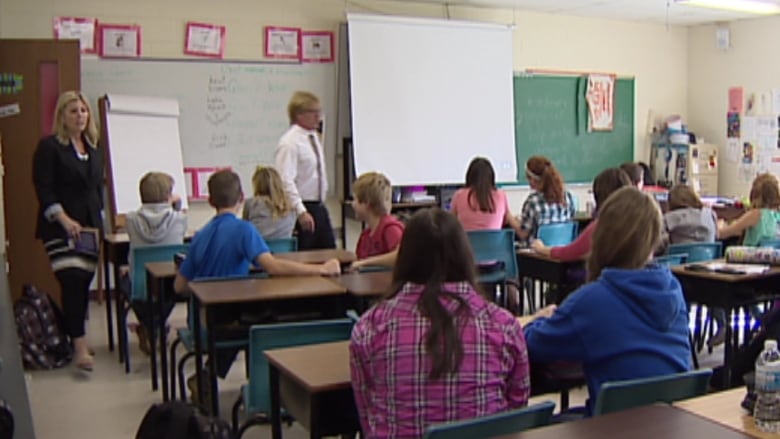National student testing shows significant improvement on P.E.I.
Girls close gap with boys in math and science

P.E.I. has come out tops in the country in reading in national standardized test results released Monday morning, and improved significantly in mathematics and science.
The Pan-Canadian Assessment Program measures Grade 8 students in reading, mathematics and science every three years. It launched as reading standardized tests in 2007, adding math in 2010 and science in 2013. The results released Monday were from 2016.
"We're very pleased at our increase over time," said Elizabeth Costa,manager of achievement and accountability with the Department of Education, Early Learning, and Culture.
"Since 2010 we've seen steady increases in performance of our Grade 8 students in reading, science and mathematics."
Reading results
With an average of 513 versus 507 nationally, P.E.I. students had the highest overall score in reading assessment, though standard error in the testing results makethat score only a little above the national average.
While nationally, average scores have not changed that much, there have been significant improvements on P.E.I. In 2007, the average score was 471, and it has improved in every round of testing since.
The Island also had the smallest percentage of students reading at Level 1, the lowest level measured on the test. Nine per cent of students were reading at Level 1, versus 12 per cent nationally.
"We're a very inclusive education system," Costa said. "We strive to meet the needs of each and every individual student and so we would hope that those efforts of a student-centred approach would lift all student's achievements and I believe that's what we're seeing there."
While both boys and girls have improved, girls have improved more.
In 2007 there was a 20-point spread between boys' and girls' results, and by 2016 that had grown to 28points.
Mathematics results
Mathematics was the only area where P.E.I. scored below the national average, with a 503 versus a 511 nationally, though standard error in the testing results makethat score only slightly below the national average.
Exceptional results in Quebec, 541, pulled the national average up, and P.E.I. ranked fourth among the provinces.
Since 2010 scores on P.E.I. are up from 453 to 502 for females, and girls have caught up with boys. Test scores were separated by 15 points in 2010 and just two in 2016, which is virtually equal.
Science results
Only Alberta had a higher average score than P.E.I. in science testing.
P.E.I. students scored an average of 516, virtually the same as the 518 in Alberta. The Canadian average was 508.
P.E.I.'s score was up from 491 in 2013.
As in math, the gap between boys and girls closed as female students overtook males. Girls were behind boys byseven pointsin 2013 but scored three points higher in 2016.
P.E.I. had the second highest participation rate for the tests in the country, and was below the national average for students who took the test with special accommodations.
More P.E.I. news
Corrections
- A previous version of this story incorrectly stated that P.E.I. had the highest participation rate for the tests in the country. In fact, the Island was second in the country.Apr 30, 2018 4:47 PM AT












_(720p).jpg)


 OFFICIAL HD MUSIC VIDEO.jpg)
.jpg)



























































































